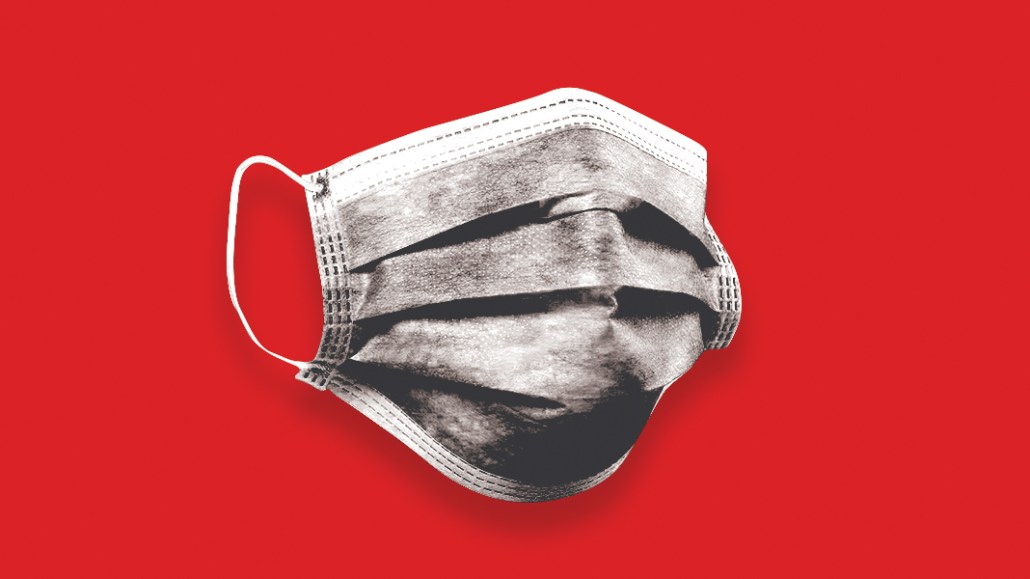Register by Jan 13 to save on passes and connect with marketers from Uber, Bose and more
‘I’m so frustrated how they treat these stories’: Publishers find coronavirus keyword blocking drops ad demand for homepage placements

Coronavirus is shining a light on a long-running problem with overzealous block lists.
As the coronavirus pandemic continues to dominate news cycles the world over, advertisers have been quick to add terms related to the virus to their keyword blocklists to avoid any potential brand safety fallout from appearing adjacent to grisly articles. But entire news-site homepages are also inadvertently being blocked as a result — which is even interfering with inventory that was directly sold by publishers’ internal sales teams.
Much like the front page of a newspaper, homepages tend to house a publishers’ most trafficked real estate, with advertiser takeovers fetching tens of thousands of pounds per day for U.K. premium sites. The Guardian, for example, charges £80,000 ($98,000) per day for bespoke responsive homepage formats, according to its rate card. On homepages, editors do their best to tee up a taste of the entire day’s worth of content, making them susceptible to ever-cautious advertisers’ wide-ranging block lists.
“I’m so frustrated how they treat these stories: This is really important because in the end you’ll run out of money to be able to pay journalists if you can’t monetize this sort of content,” said a senior U.K. news publishing executive. “This one is particularly acute as [coronavirus is] the only story in town.”
An analysis of U.K. premium news sites by Adyoulike, a native advertising supply-side platform, found there had been a 20% decline in homepage targeting in the first 15 days of March — as coronavirus coverage began to significantly step up — versus the first 15 days of February this year. The analysis looked at around 500 million available homepage ad impressions.
In that period, there was a 40% decline in homepage targeting in ads transacted on the open market, a 20% drop off in homepage targeting in private-marketplace deals, and 10% fewer requests for homepage targeting on direct campaigns.
To be sure, some of the decline could be chalked up to advertisers simply switching off spending in this period of uncertainty and as companies in sectors like travel and hospitality are dealing with a huge shortfall in sales. Adyoulike inferred some of the shortfall is also owed to keyword blocking. On the open marketplace, Adyoulike noted some campaign ad domains that ordinarily appeared across news publishers have shifted spend to titles that are less focused on hard news, said Dale Lovell, Adyoulike U.K. managing director and co-founder.
Lovell said Adyoulike had also received several agency emails asking the platform to put in place measures to mitigate the risk of their clients appearing against coronavirus-related content. One advertiser with a particularly stringent block list was only able to reach 10,000 impressions across a well-known U.K. news publisher’s entire site after doing so, Lovell said. Once the list was lifted for the homepage (but kept in place across the rest of the site) some 200,000 impressions per day were available on just the front page alone.
DoubleVerify, an ad verification company, is this week advising its clients to consider not blocking categories like “natural disasters” — which is how the coronavirus emergency is categorized in its system — on trusted news publisher sites. The company is also advising advertisers to add exceptions for home pages and section pages — international news, business, and so on — even if they want to avoid individual articles related to coronavirus, said Matt McLaughlin, DoubleVerify COO.
DoubleVerify’s tech drew attention among ad tech executives on Twitter earlier this month after its ads was spotted on the homepages of premium news publications including The New York Times and The Wall Street Journal.
DoubleVerify’s tech is recognizable because it replaces ad placements with an image of clouds set on a blue background when it deems a URL to be unsuitable for an advertiser or when it detects the user could be a bot. (Keywords are evaluated against a URL, so DoubleVerify doesn’t block keywords on homepages, but it will block placements for advertisers who are choosing to avoid broader categories of content on the page.) As the publisher didn’t end up displaying the intended ad, the advertiser can then claim a clawback. McLaughlin said the cloud ads have become more prominent recently because more ads are being delivered programmatically due to the surge in traffic to news publishers.
“What is clear is that COVID-19-related content is going to be a very significant driver of consumer activity, for potentially a significant period of time,” said McLaughlin. “Brands should take a very hard look at supporting those publications producing legitimate information and analyzing whether consumers will really associate the brand with the content when it is so prevalent … it really becomes part of everyday life.”
Interpublic ad-buying agency Magna Global also last week advised clients not to block words related to coronavirus from their digital ad placements, Business Insider reported.
“Previously it was not as visible how bad keyword blocking was for legit publishers,”said ad fraud researcher and consultant Augustine Fou. “This extraordinary event is exposing how brand safety tech works — using stupid keyword lists — it is not happening more often, it is just more evident.”
More in Media

Why publishers are building their own creator networks
Publishers are forming creator networks to regain control, combat traffic declines, and reach audiences shifting toward influencers.

The accidental guardian: How Cloudflare’s Matthew Prince became publishing’s unexpected defender
Cloudflare’s day job is fending off botnets and nation-state cyberattacks, not debating how Google and other AI firms crawl publisher sites.

A timeline of the major deals between publishers and AI tech companies in 2025
Here’s a list of all the major deals signed between publishers and AI tech companies in 2025.





